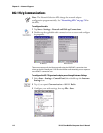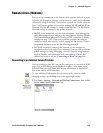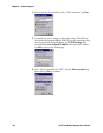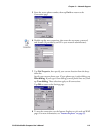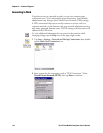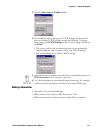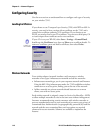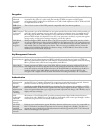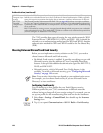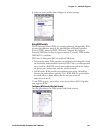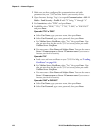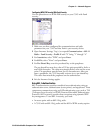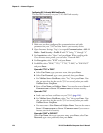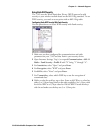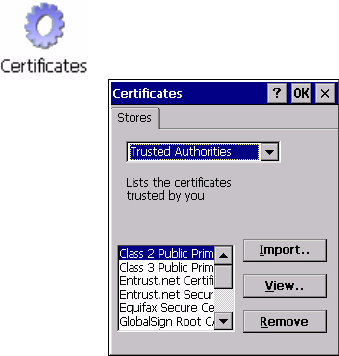
Chapter 5 — Network Support
118 751G Color Mobile Computer User’s Manual
Configuring Security
Use the next sections to understand how to configure each type of security
on your wireless 751G.
Loading Certificates
If you choose to use Transport Layer Security (TLS) with WPA or 802.1x
security, you need to have a unique client certificate on the 751G and a
trusted root certificate authority (CA) certificate. If you choose to use
PEAP, you need to load a root CA certificate. You can use a third-party CA
to issue unique client certificates and a root certificate.
Wireless Networks
Your wireless adapter (network interface card) connects to wireless
networks of two types: infrastructure networks and ad-hoc networks.
• Infrastructure networks get you in your corporate network and Internet.
Using the 802.11b/g infrastructure mode, the 751G establishes a wireless
connection to an access point, linking you to the rest of the network.
• Ad-hoc networks are private networks shared between two or more
clients, even with no access point.
Each wireless network is assigned a name (or Service Set Identifier - SSID)
to allow multiple networks to exist in the same area without infringement.
Intermec recommends using security measures with wireless networks to
prevent unauthorized access to your network and to ensure your privacy of
transmitted data. Authentication (cryptographically protected) by both the
network and the user, transmitted data, and encryption are required
elements for secure networks. Schemes are available to implement the
features.
If your CA is on your WLAN, select Start > Settings > Control Panel,
double-tap the Certificates icon, then tap View to see certificate details. To
remove a certificate, press and hold a certificate, then select Delete.





